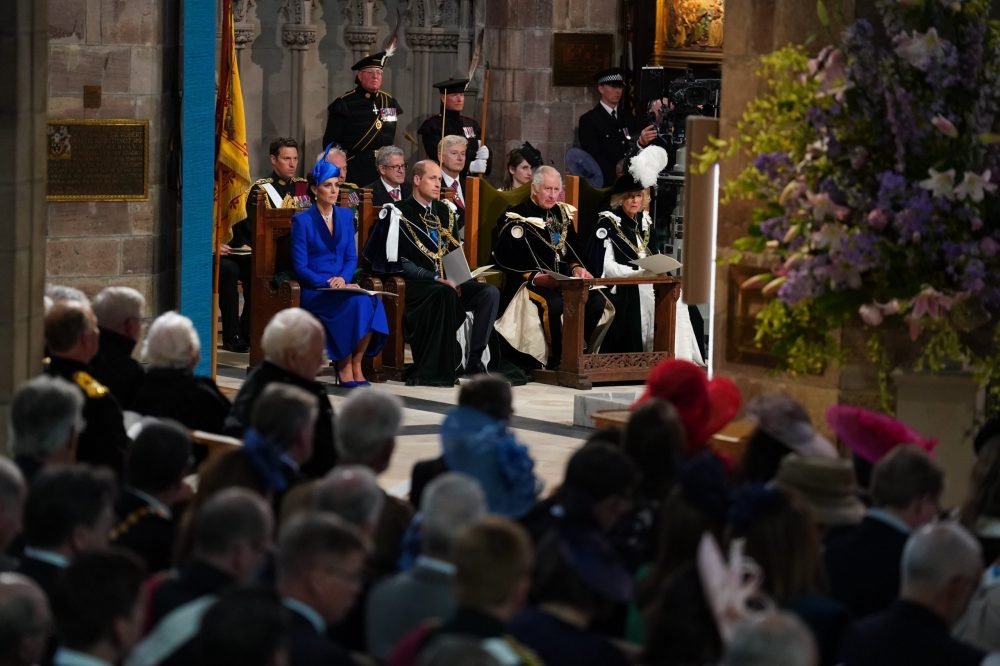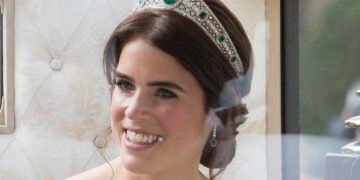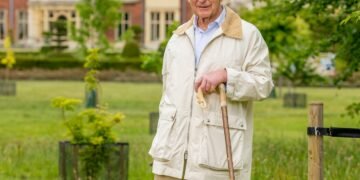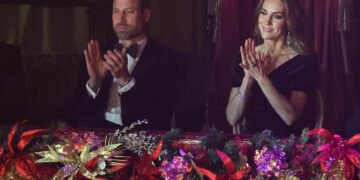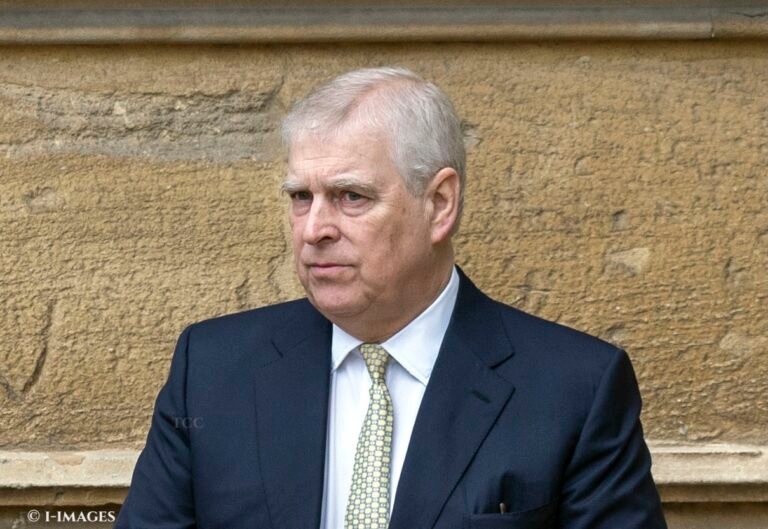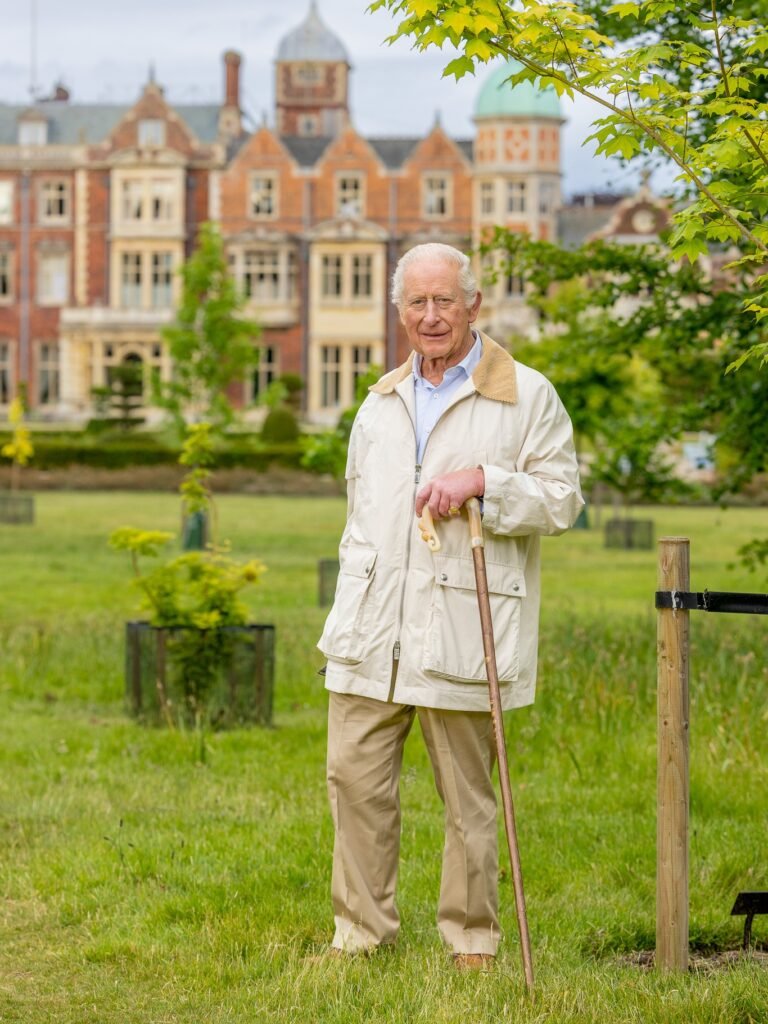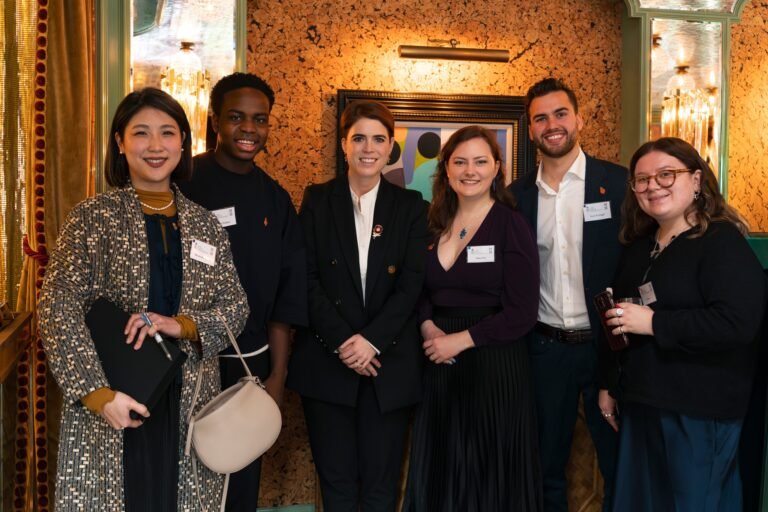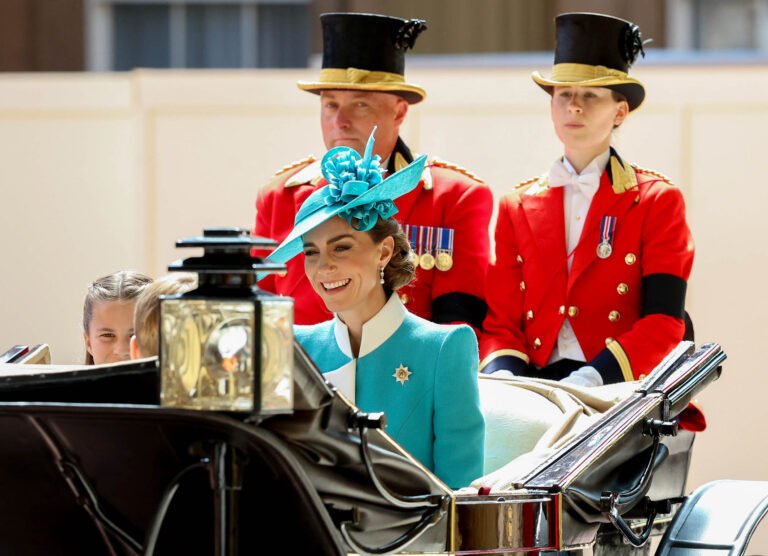Day three of Holyrood Week was all about the coronation, as Charles III was given the Honours of Scotland – the Scottish Crown Jewels.
Embed from Getty ImagesEmbed from Getty Images
Joined by The Duke and Duchess of Rothesay, as The Prince and Princess of Wales are known in Scotland, The King and Queen left the Palace of Holyroodhouse for a short ride up the Royal Mile to St Giles’ Cathedral.
Their Majesties and the Duke wore the robes of the Order of The Thistle for the event; Charles was in his Royal Navy Admiral of the Fleet uniform, while Prince William wore his RAF No.1 uniform.
The King appointed his wife to the order in June, making this was the first time she has worn the deep green mantle and collar and badge, which belonged to Elizabeth II.

Camilla opted for a white Bruce Oldfield gown for the day, the same designer as her coronation dress. Catherine, meanwhile, wore a vibrant blue outfit seen previously at Easter.
Another procession, featuring 100 people and the Honours, made its way down to the Cathedral from Edinburgh Castle at the same time.

Embed from Getty Images Embed from Getty Images

The group represented various ‘aspects of Scottish life’, led by The Royal Regiment of Scotland, Shetland pony mascot Corporal Cruachan IV, along with musicians from the Combined Cadet Force Pipes and Drums, 51 Brigade Cadet Military Band.
As with many royal events since the late Queen’s death, protesters had gathered with signs of ‘Not My King’ and booed as the procession passed. Police reported the arrest of two women during the event, after they allegedly attempted to climb over a crowd safety barrier on the Royal Mile, for breach of the peace.
Three pipers from Gordonstoun – where both Charles and Prince Philip were educated – played during the final stage of the procession.

The National Service of Thanksgiving began with a procession by the royal party through the cathedral to their seats and during the event, The King was presented with the Honours of Scotland – the crown of King James V, the sceptre, and the sword of state.
They are much older than the 1661 items in the English Crown Jewels, though the Anointing Spoon dates back to the 12th century.
A new sword was commissioned by the Scottish Government for the Service as the original one, which is over 500 years old, was deemed too delicate for the event.

‘By the symbol of this crown, we pledge our loyalty, entrusting you to reign as our king in the service of all your people,’ said Alexander Douglas-Hamilton, the Duke of Hamilton and Brandon and Scotland’s most senior peer, as he presented The King with the crown on a cushion.
‘In receiving this crown, I so promise by God’s help,’ replied Charles, touching the crown.
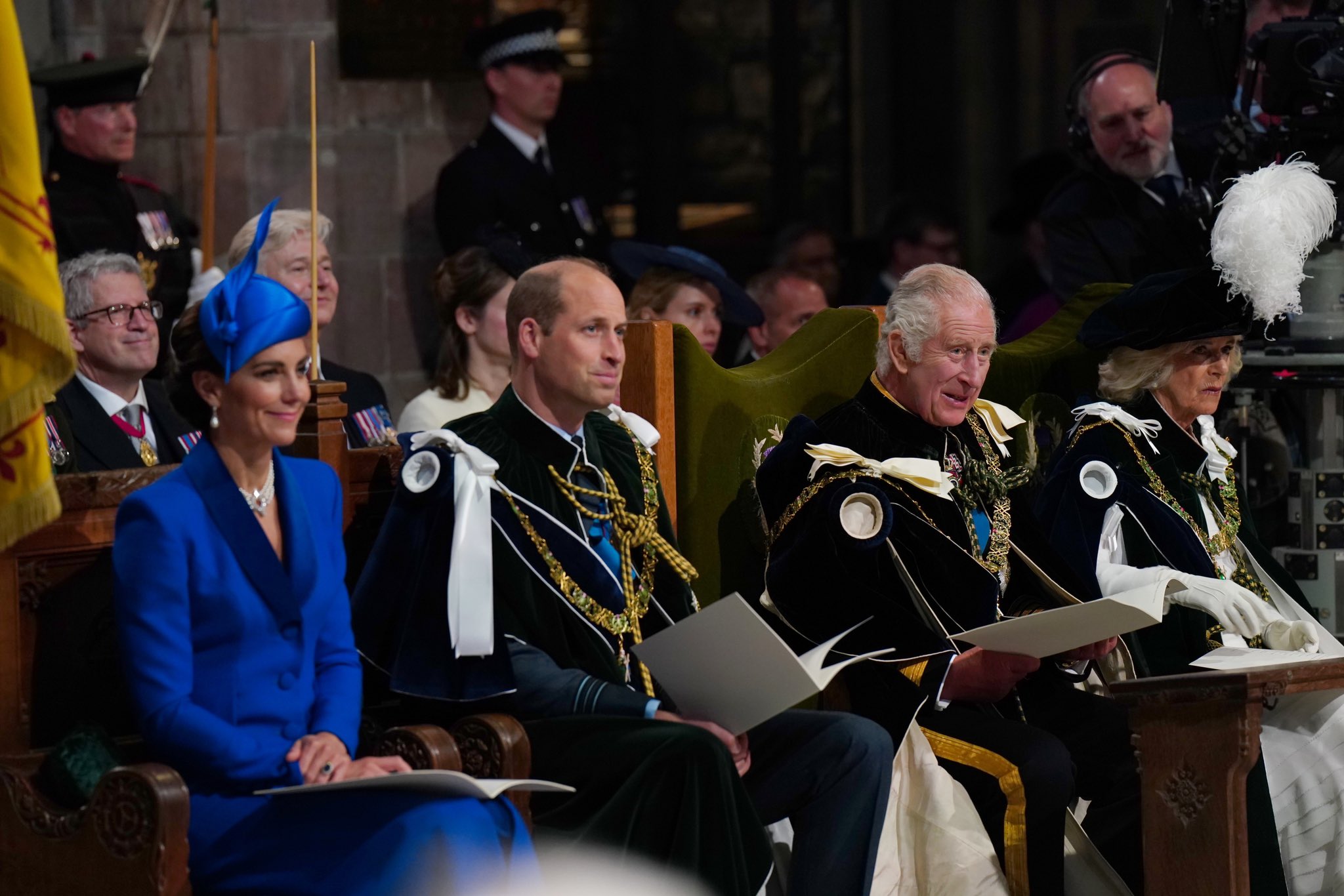
The Stone of Destiny, used at Charles’ May coronation, was also present, and had been brought to the cathedral. The symbolic sandstone block will return to its original home of Perthshire next year, after more than 700 years in England. It was returned to Scotland, to Edinburgh Castle, in 1996.
Having a second ceremony to mark the coronation north of the border, with the Scottish Crown Jewels, is a reminder that while the kingdoms of England and Scotland are joined in the person of the British Monarch, they operate slightly differently – the churches, for example, and a separate, devolved government in the north.
The moderator of the General Assembly of the Church of Scotland, Rt Rev Sally Foster-Fulton, preached the sermon, while First Minister Humza Yousaf gave a reading.
Following the service, a 21-gun salute was fired from Edinburgh Castle. The Royals made their way back to Holyrood, where they were treated to a special flypast from the Red Arrows. Standing in the courtyard, Charles, Camilla, William and Catherine watched in delight before posing for some official photos released.
Princess Anne was at the palace to see the procession leave and the flypast later.
The King and Queen continue their week in Scotland tomorrow while The Duke and Duchess will return down south for a charity polo match tomorrow.

